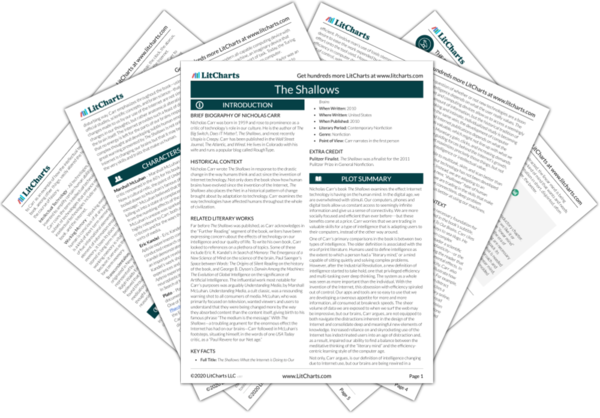Carr reiterates that the scientific evidence proves without a doubt that our brain is very much a learning and changing structure. The implication, however, is that our brain can be rewired to detrimental effects. He is planting the seed for his future argument, in which he suggests that the Internet might be rewiring our brains, but not for the betterment of humanity.
